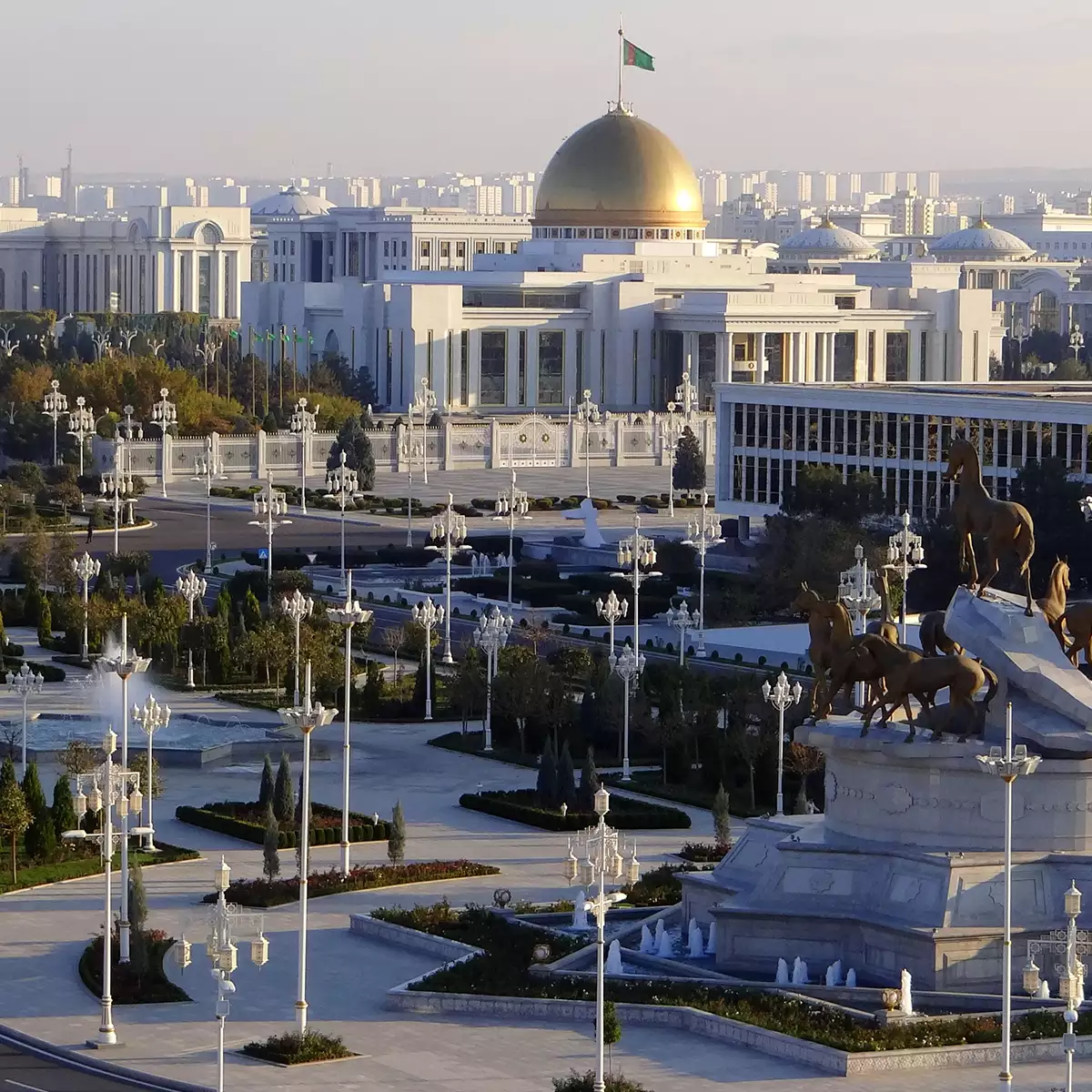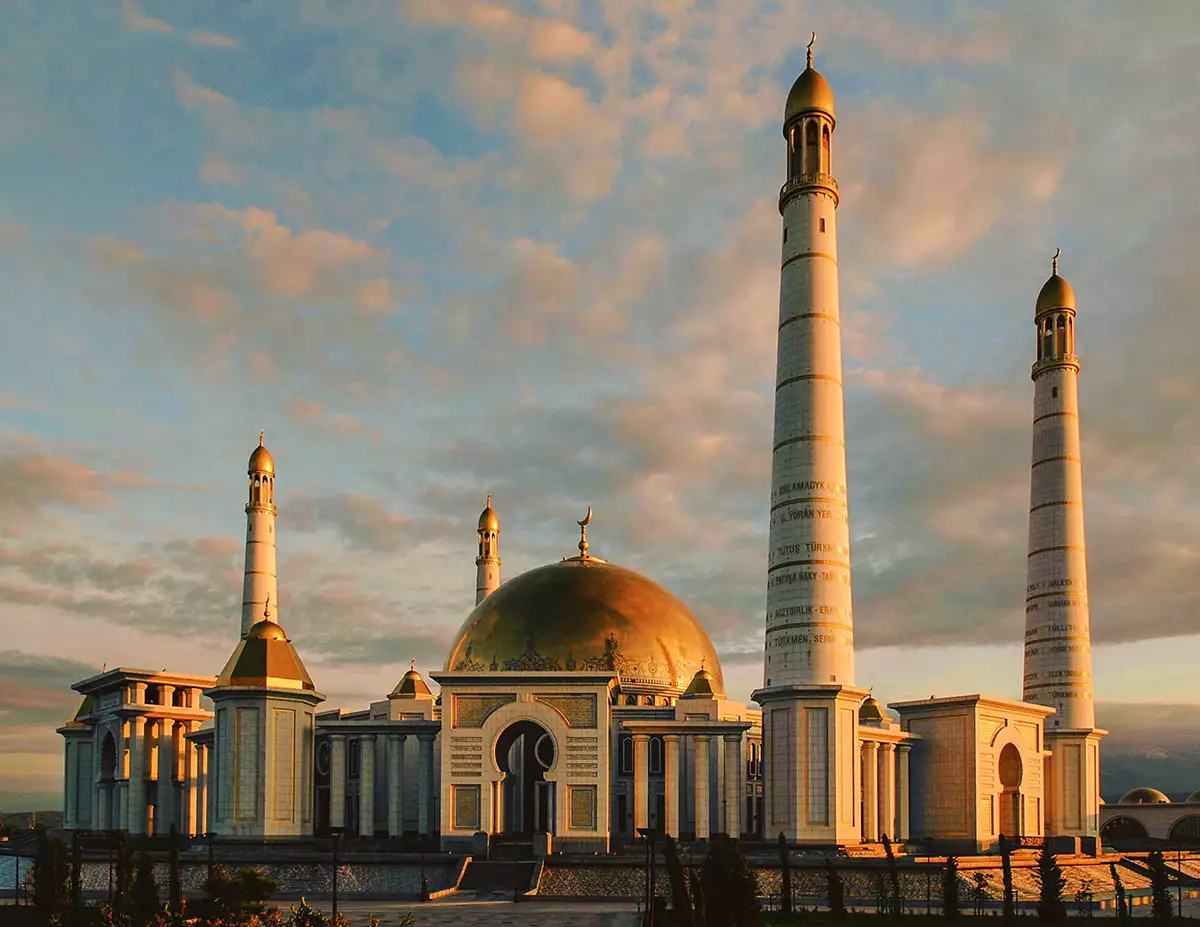Ashgabat, Turkmenistan

The name of the Turkmenistan`s and the largest city of the republic is very unusual, it comes from the Arabic word ashkhabat, which means “City of Love". It received this name in 1881 from the settlement of Askhabad on the site of which there was a military fortification with an ancient fortress. Being a relatively young city, Ashgabat It found its face in the middle of the XX century, as the tragedy of October 6, 1948, literally wiped out the entire city in one night, taking the lives of thousands of residents. A few years later, a beautiful new city grew up on the site of the ruins, in which, unfortunately, there were no historical monuments left.
But Ashgabat seems to have been born anew, and today it is impossible to imagine that piles of ruins once smoked on the site of white marble palace ensembles and majestic structures. Now there are fashionable hotels, offices of ministries and departments, park areas and highways against the background of snow-capped mountains look like magic castles. The unique oriental flavor of the city is given by the soaring minarets of mosques, the original architecture of comfortable residential high-rises impresses. Ashgabat has turned into the largest city of the republic and has become even more beautiful and fresher than before. Industry is actively developed here. There are universities, institutes, research institutions, theaters, museums, clubs.
Location
The city is located in the south of Turkmenistan, in the Akhal oasis on the edge of the Kara-Kum desert, in a picturesque valley at the foot of the Kopetdaga ridge. From the south — Kopetdag Mountains, from the north — the Karakum desert. The height above sea level is 214-240 m .
The climate of Ashgabat
The climate is sharply continental, arid, with hot and dry summers. The average temperature varies from 12 to 17 degrees Celsius. The coolest month is January, with an average temperature of + 4°C. Summer is unusually dry and hot. The maximum average air temperature is observed in July + 28 degrees.
Population
In the second half of the XX century. the population of the city grew rapidly and by 2006 amounted to 660 thousand people. Turkmens make up more than 77% of the population, the remaining 23% are ethnic groups such as Russians, Armenians, Ukrainians, Azerbaijanis, in general, more than 100 nationalities. The official language is Turkmen, belonging to the Turkic group. Russian is widely spoken in Ashgabat. The majority of the population professes Sunni Islam.
Architecture of Ashgabat
The urban-planning ensemble created in the center of the capital includes the Arch of Neutrality, with a golden statue of Turkmenbashi on top, the Presidential Palace, the Mejlis building, the Academy of Sciences complex, the Academic Drama Theater named after him. Mollanepesa, Bayram Khan Monument, Lenin Square, Mekan Palace, National Library building, Music College and Conservatory, Alexander Nevsky Orthodox Church (XIX century), Ertogrulgazy Mosque with 4 minarets and a huge dome, as well as the Ashgabat Circus.
In general, the architecture of the city is characterized by the total use of white marble in the design of monuments and buildings. Hence the slogan that has become popular: "White City – Ashgabat".

Industry
The economy of Ashgabat is mainly represented by industry, financial structures and a wide trade network. There are more than 43 large industrial facilities, 128 medium-sized and more than 1,700 small industrial facilities on the territory of Ashgabat and in its suburbs. The total gross domestic product of Ashgabat in 2008, according to some estimates, amounted to about 9 billion US dollars.
History Ashgabat
There is a widespread interpretation of the word Ashgabat as eshg — love and Abad — populated, well-maintained. However, some scientists have put forward a version that the word Ashkabad comes from the Persian table "Ashk" and is the name of one of the Parthian kings of the Arsacid dynasty (Arshakids). Among other things, the place where the capital of Turkmenistan, the city of Ashgabat, is located is just a few kilometers from the former residence of the Parthian kings of Nyssa.